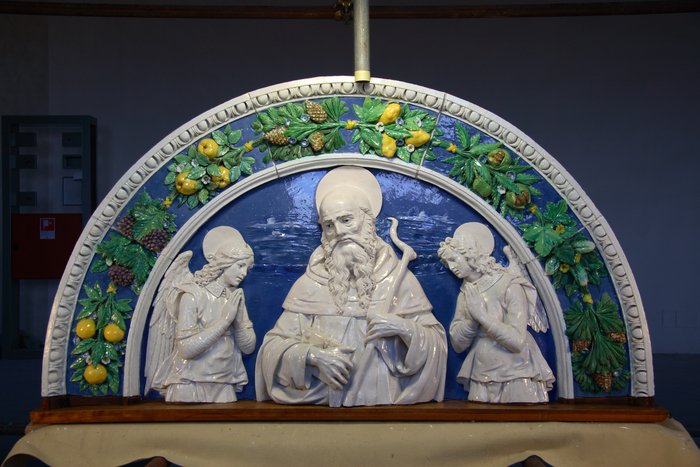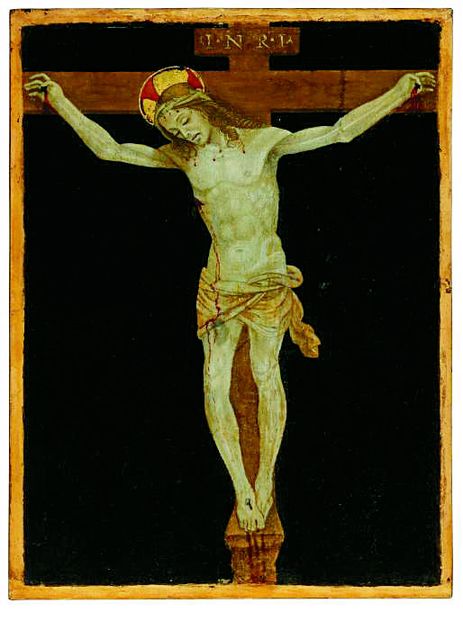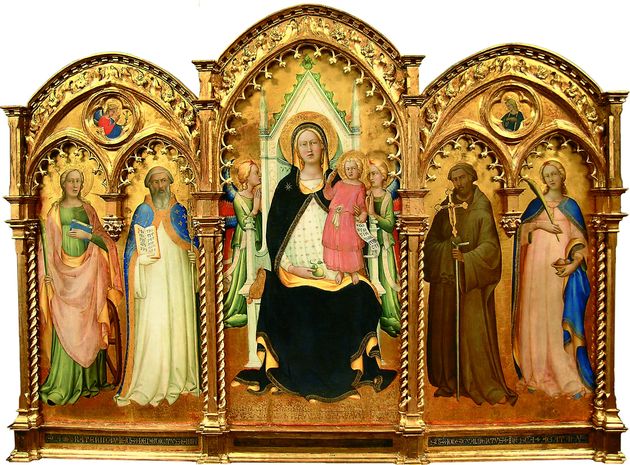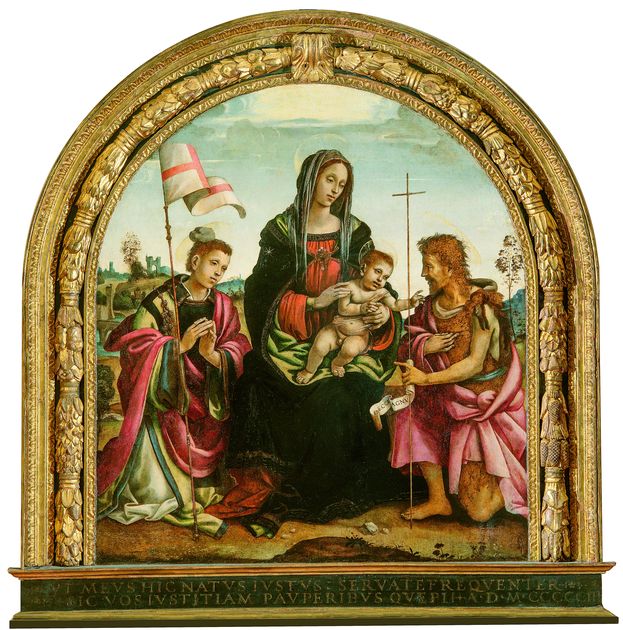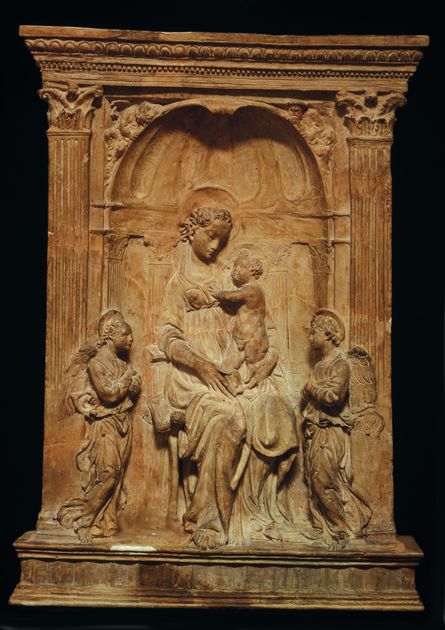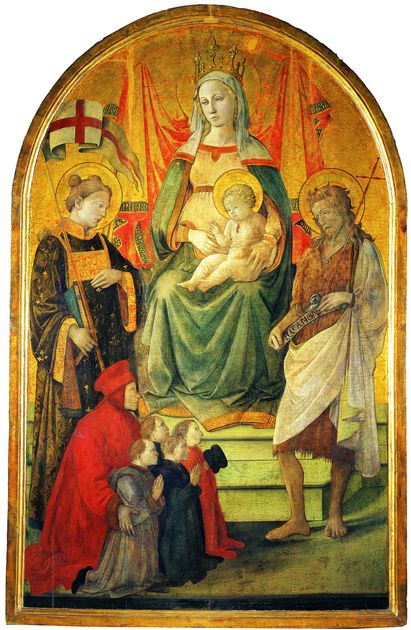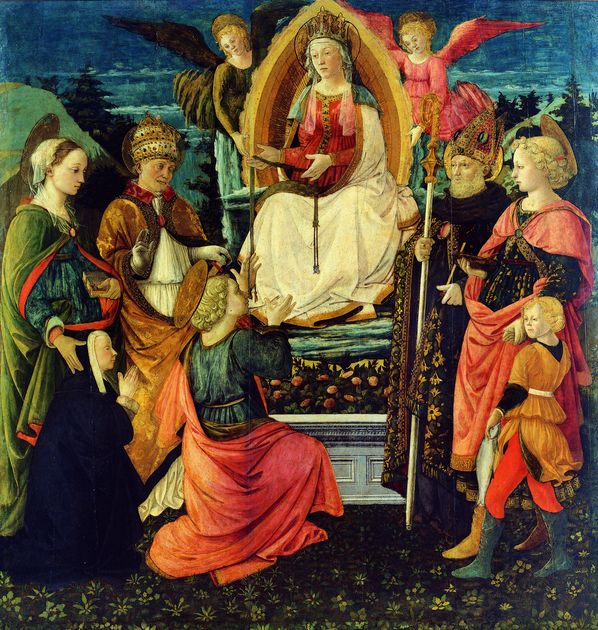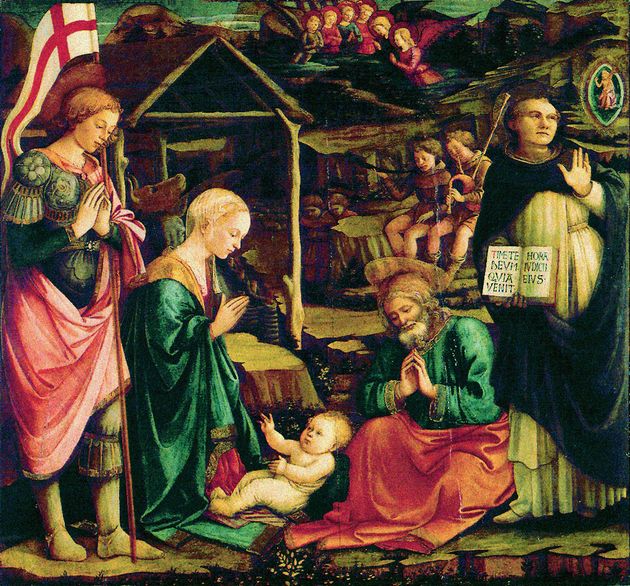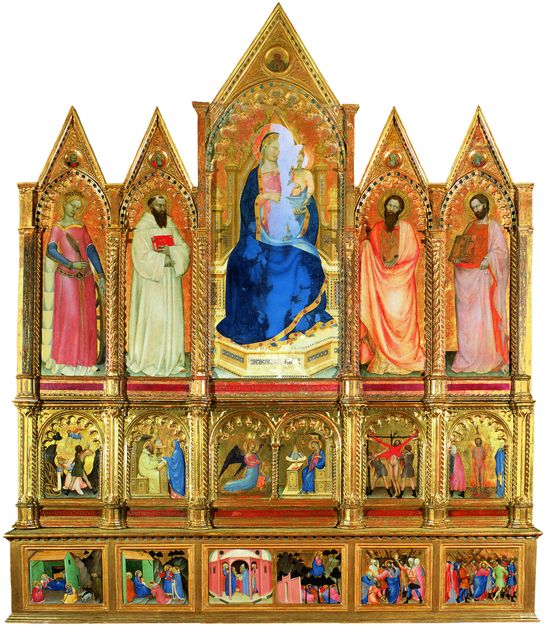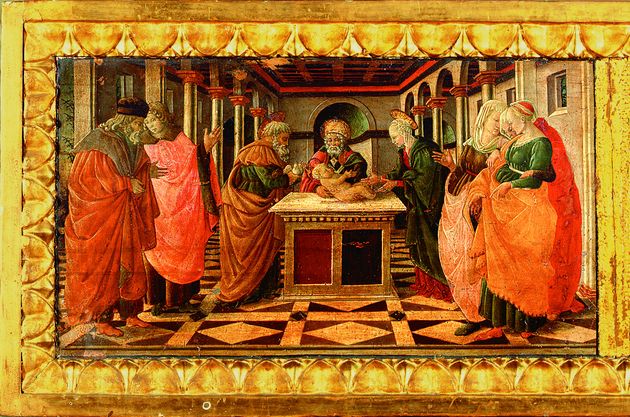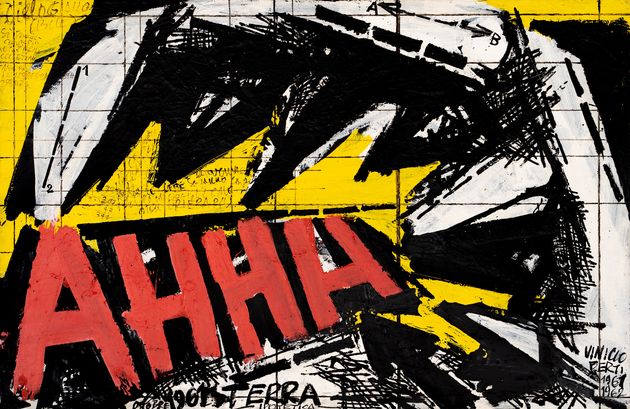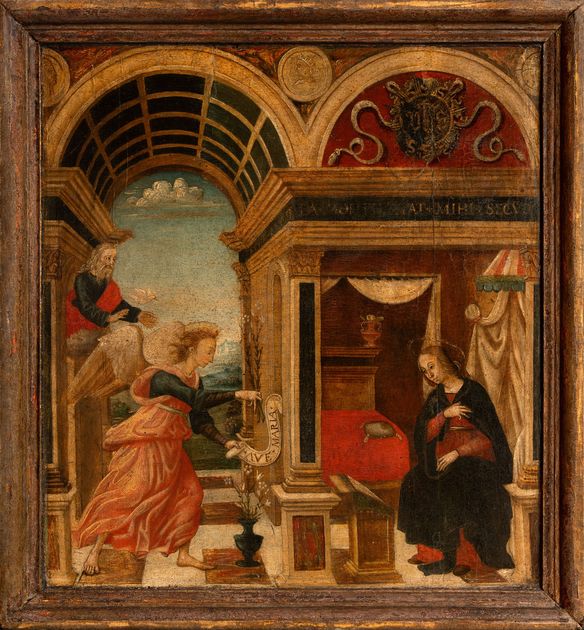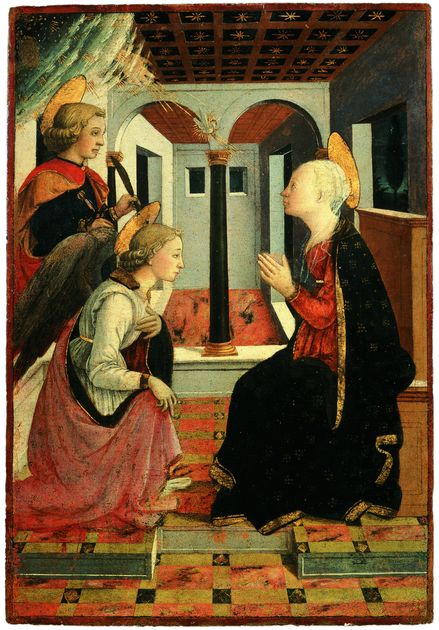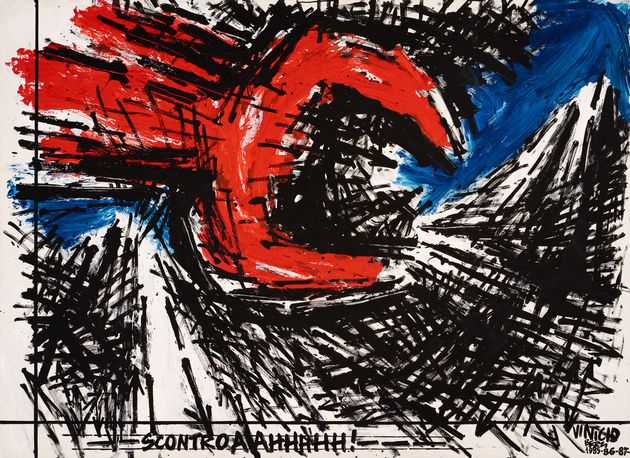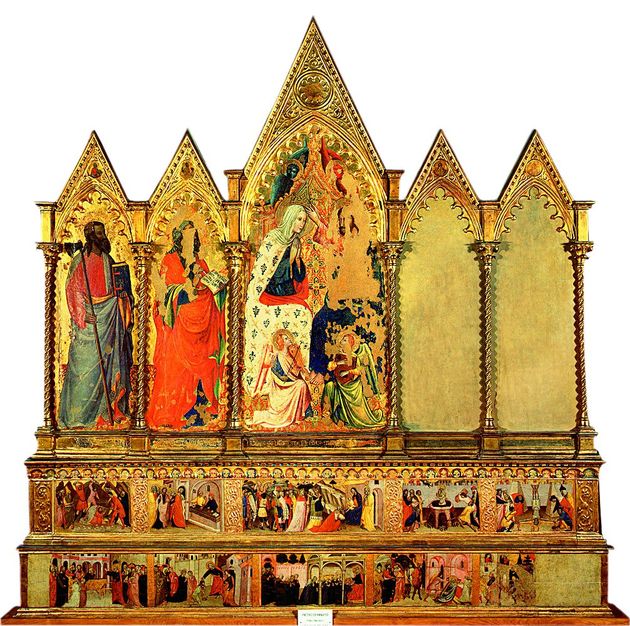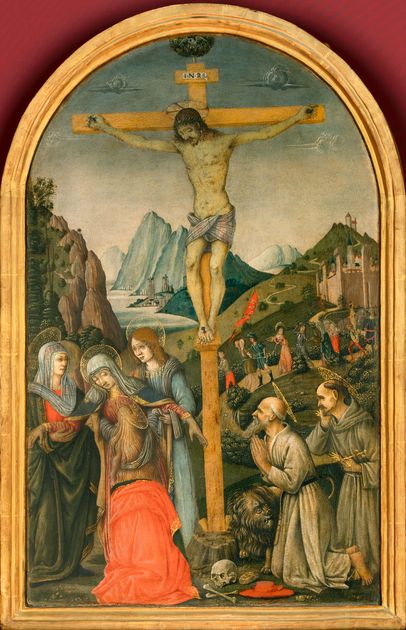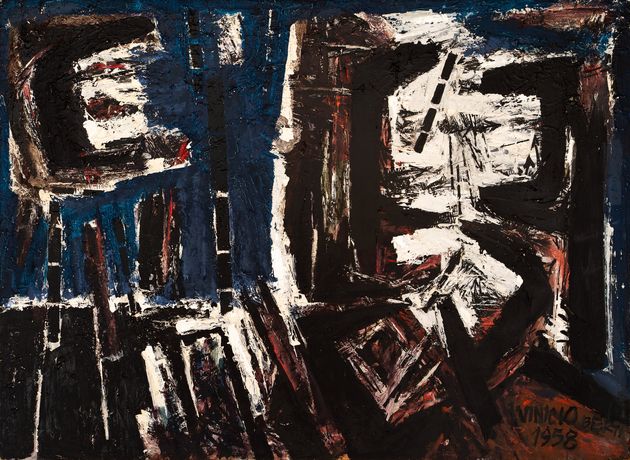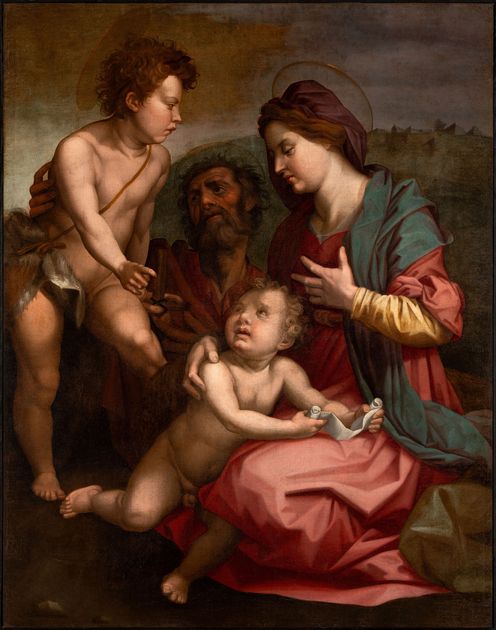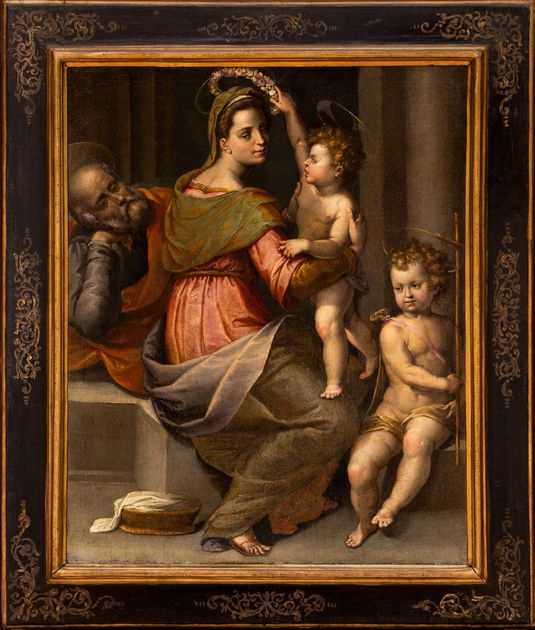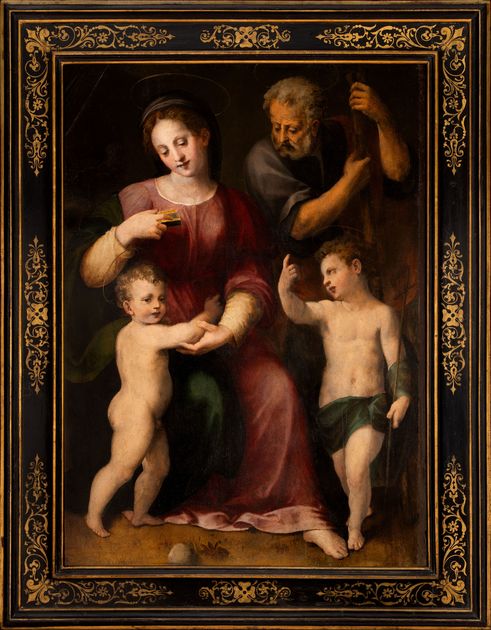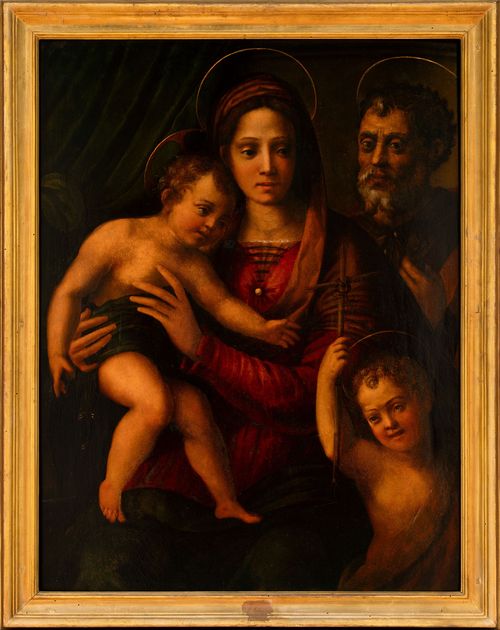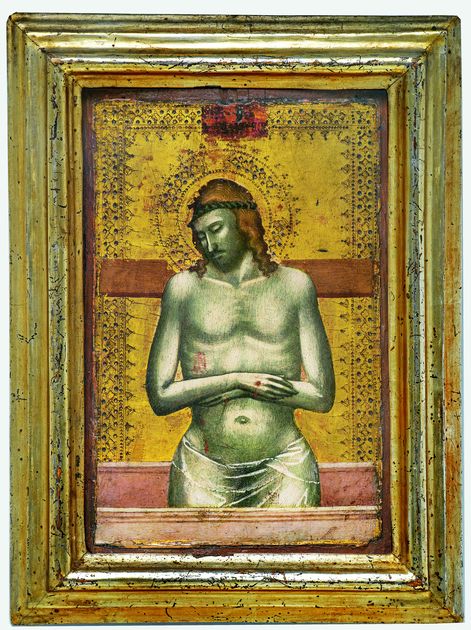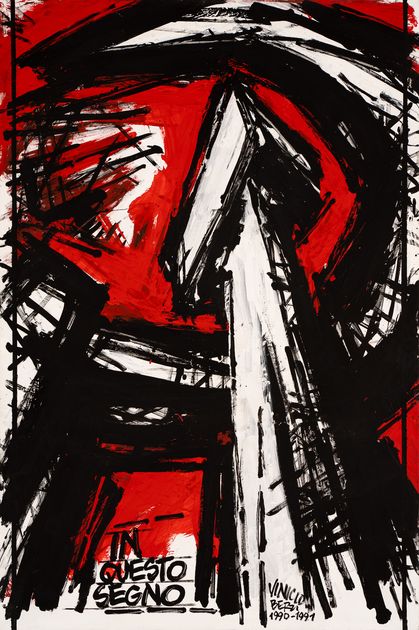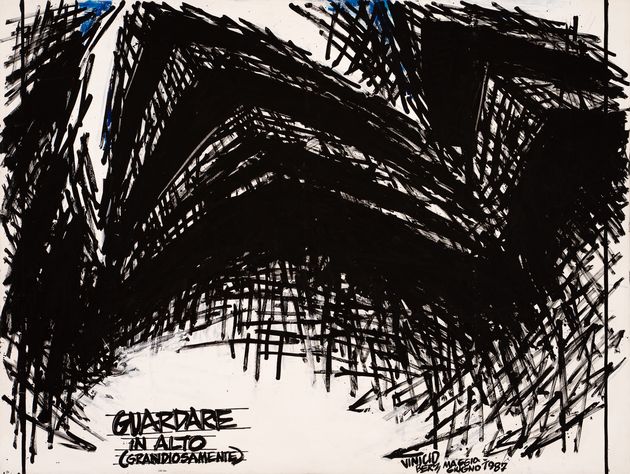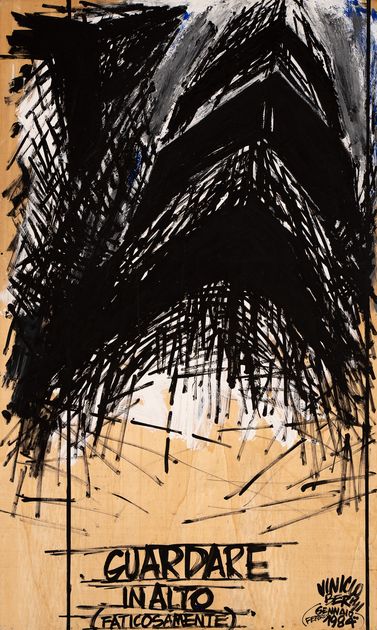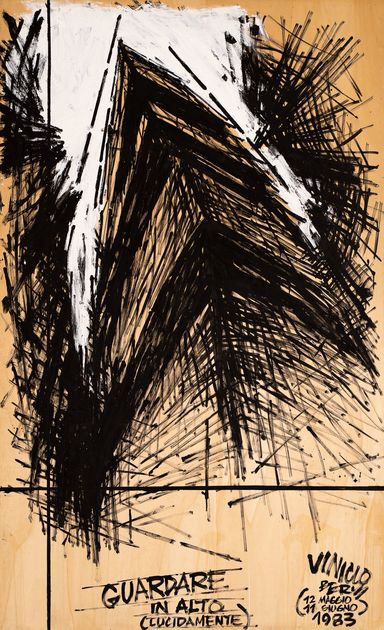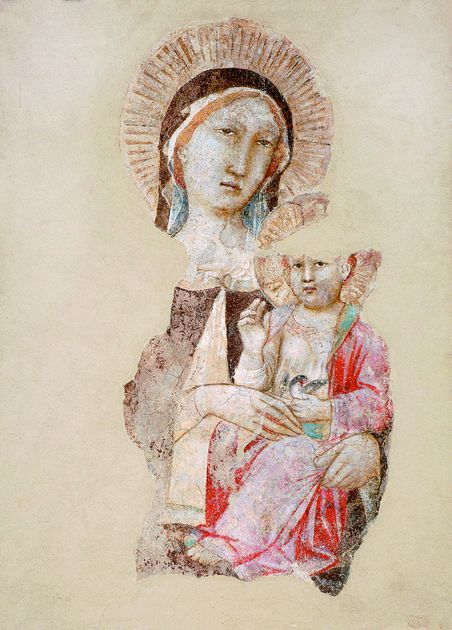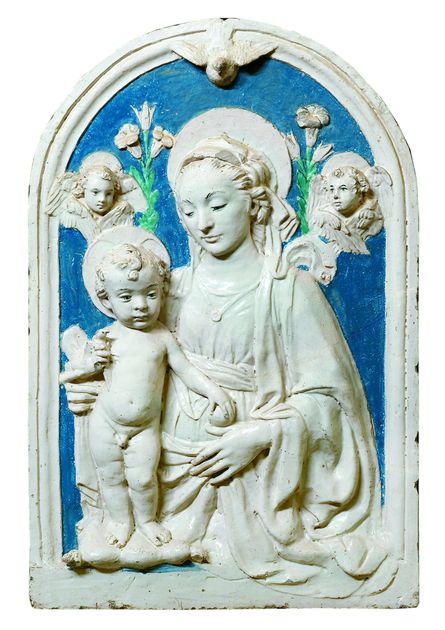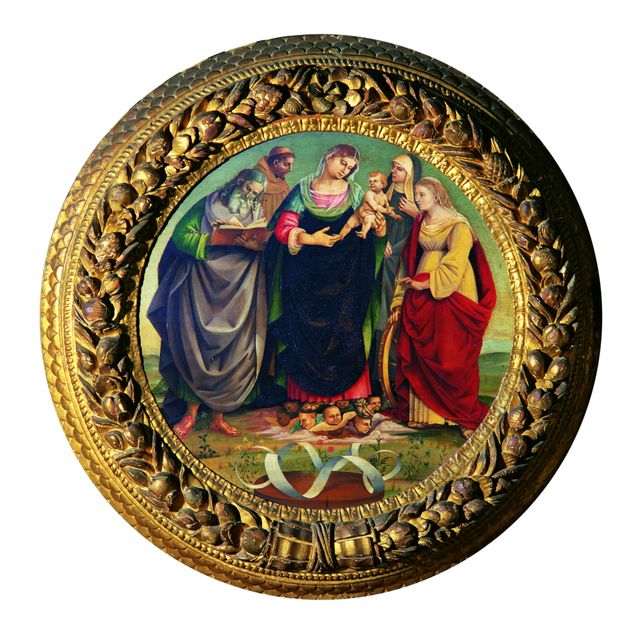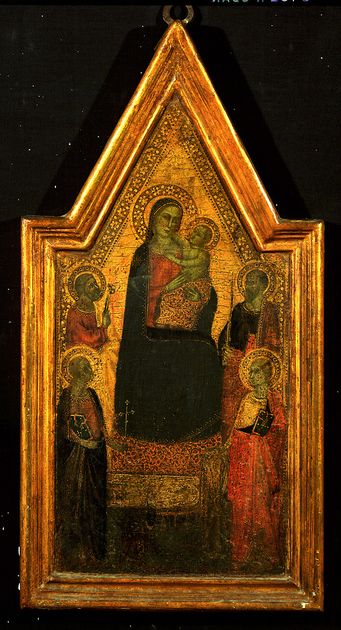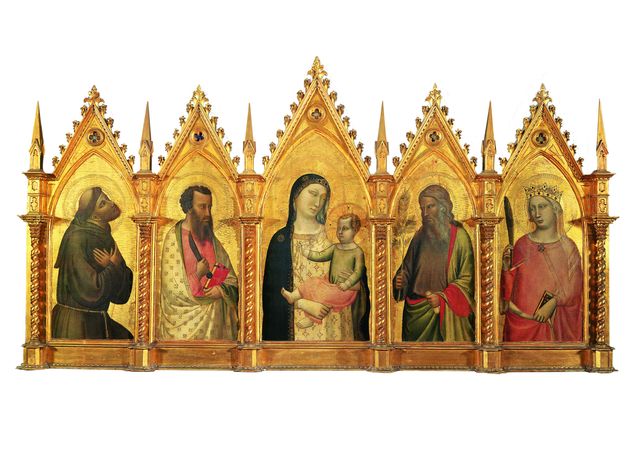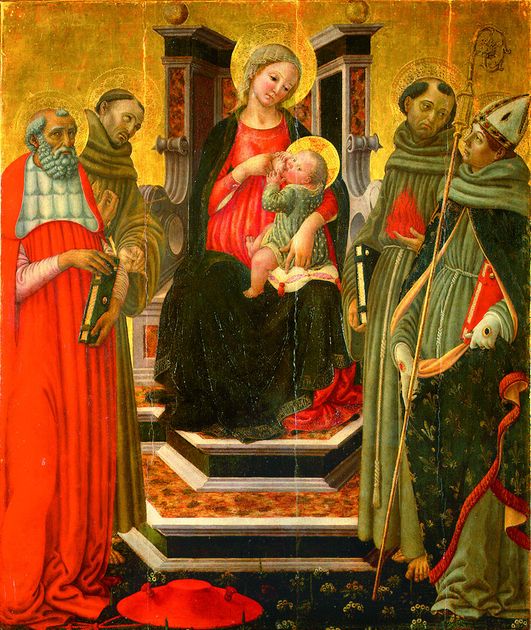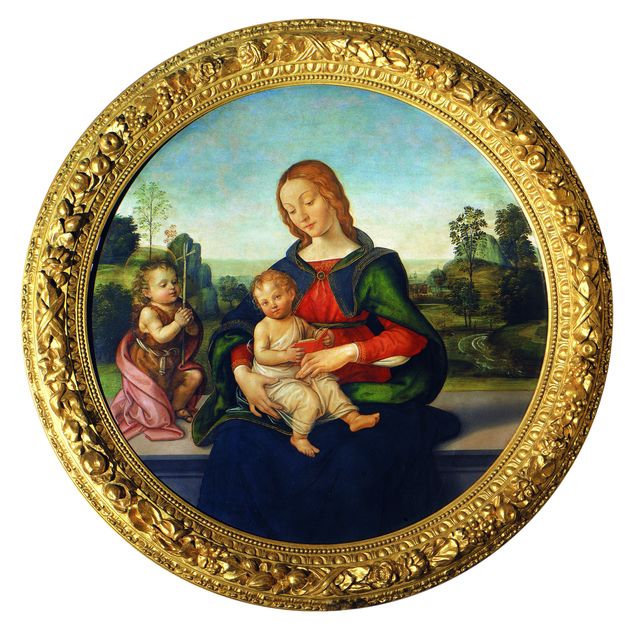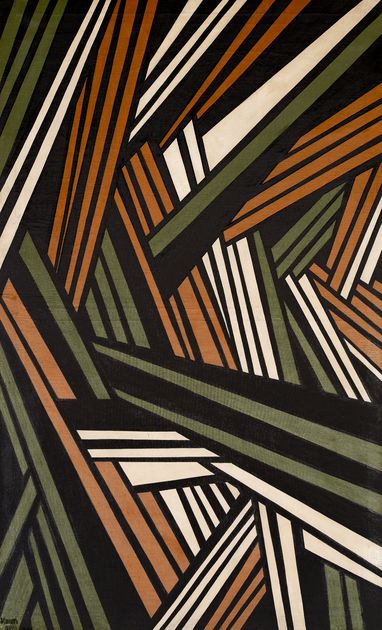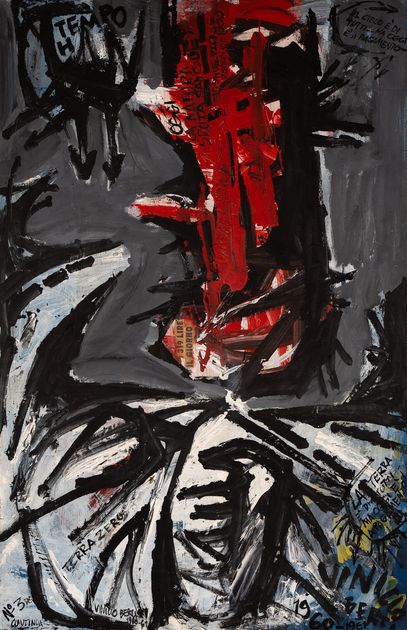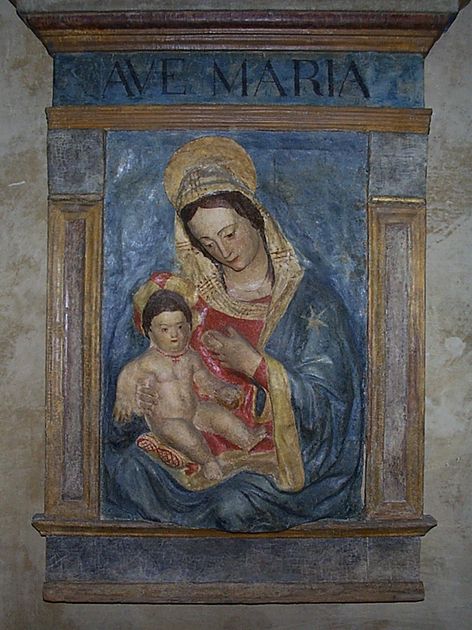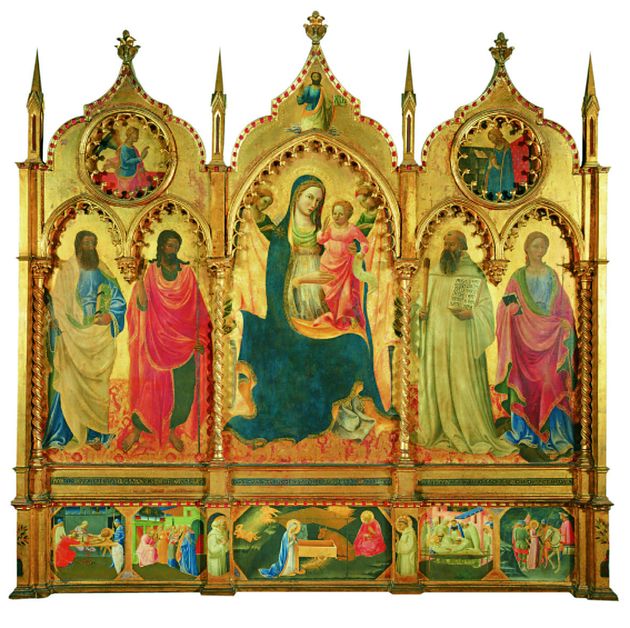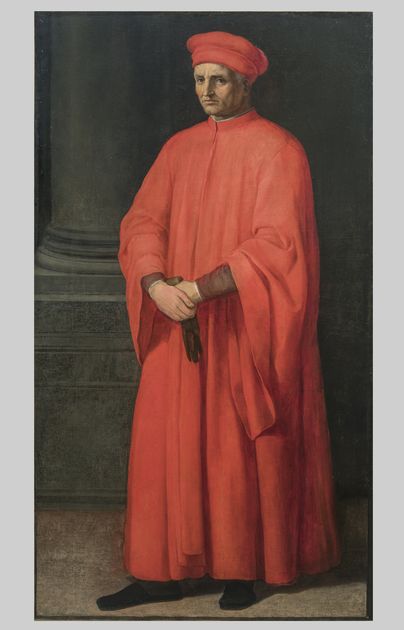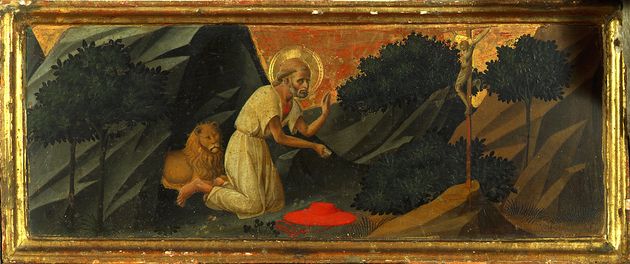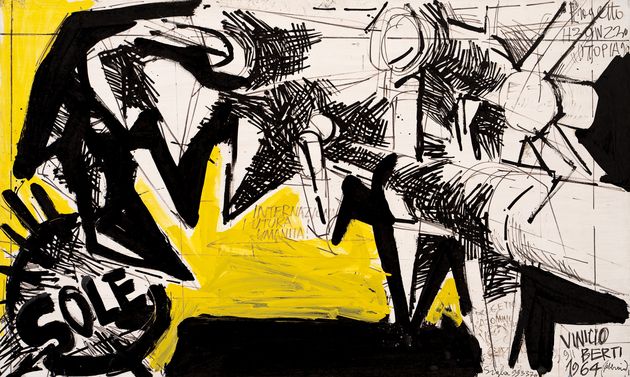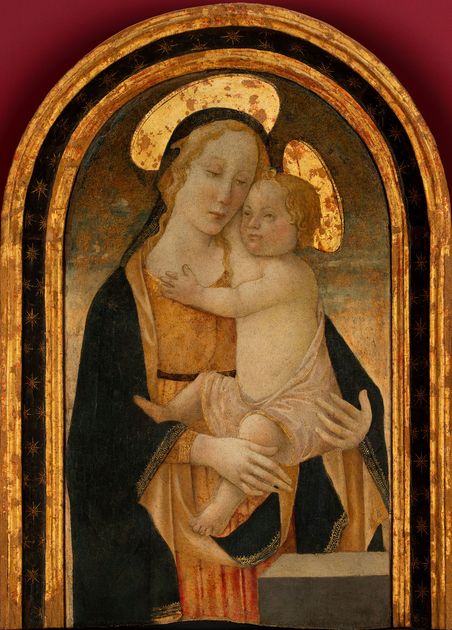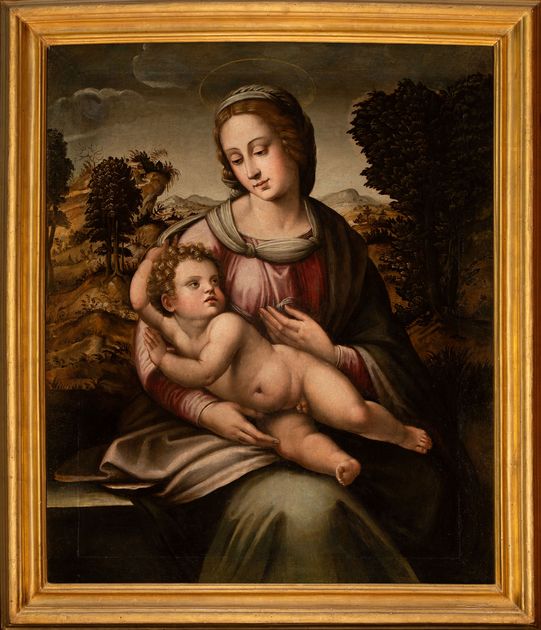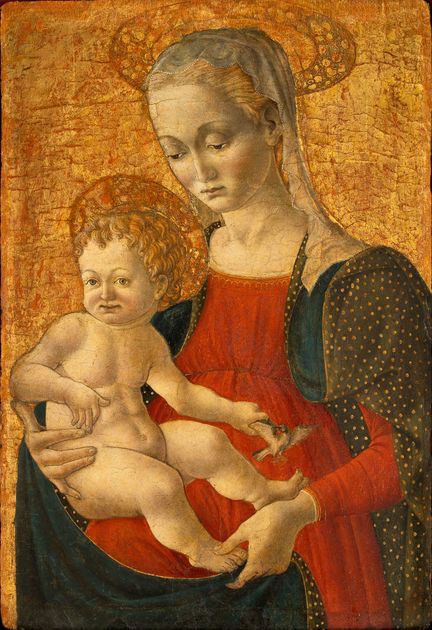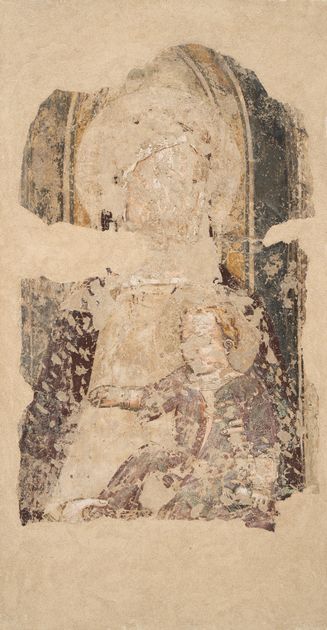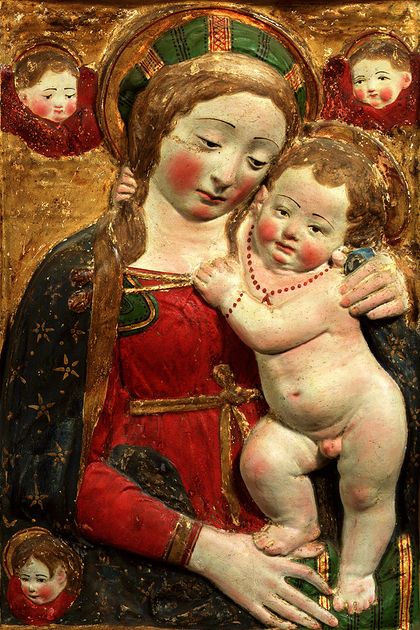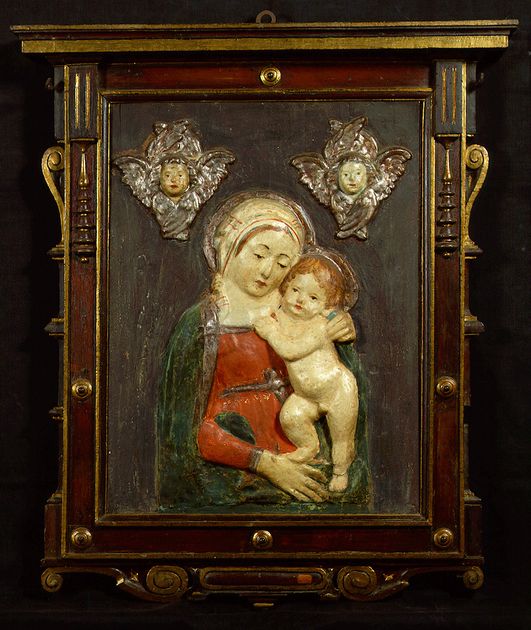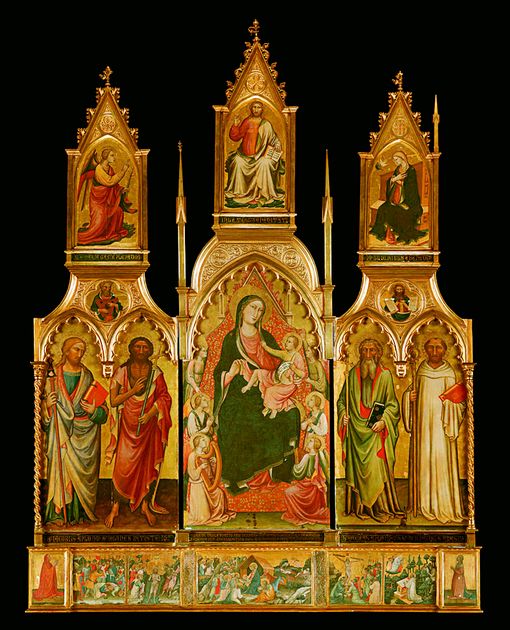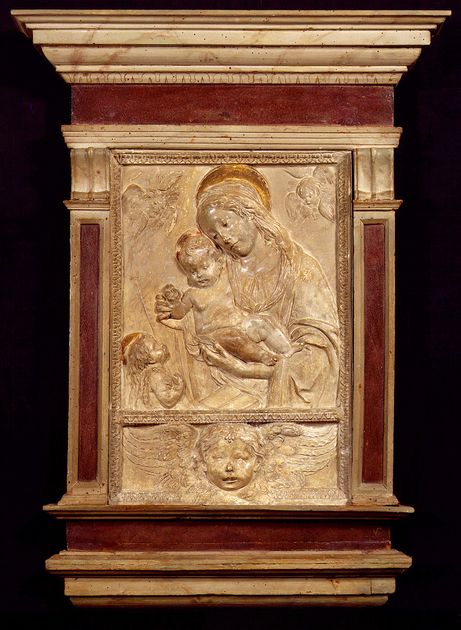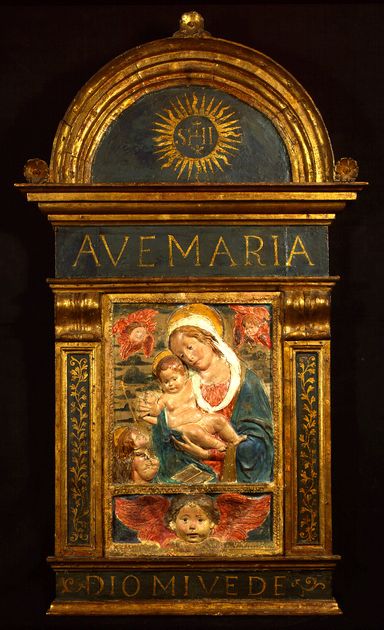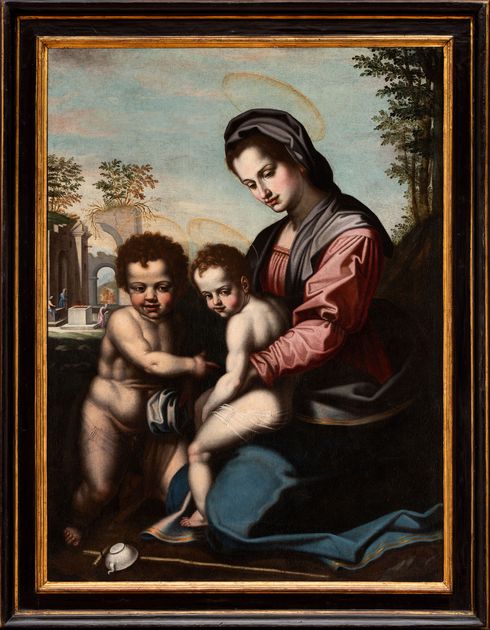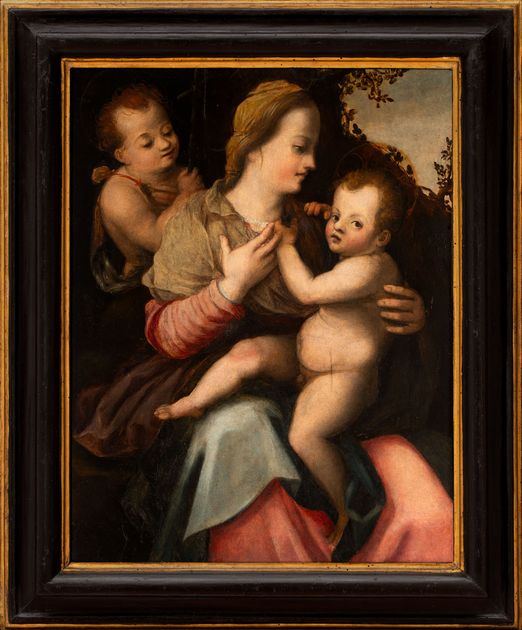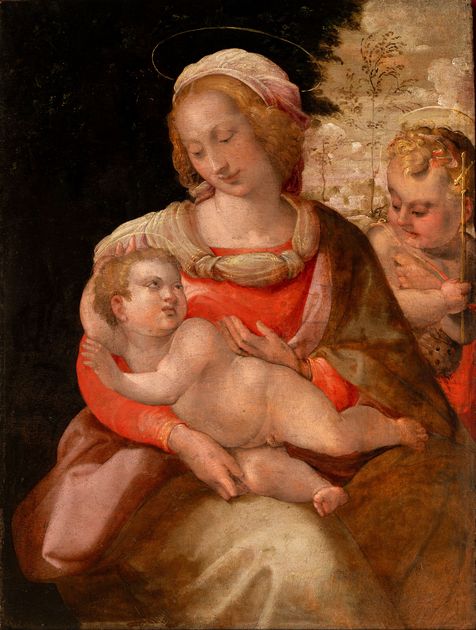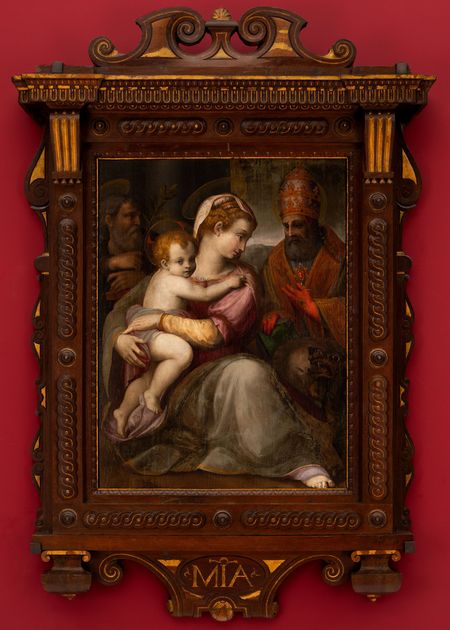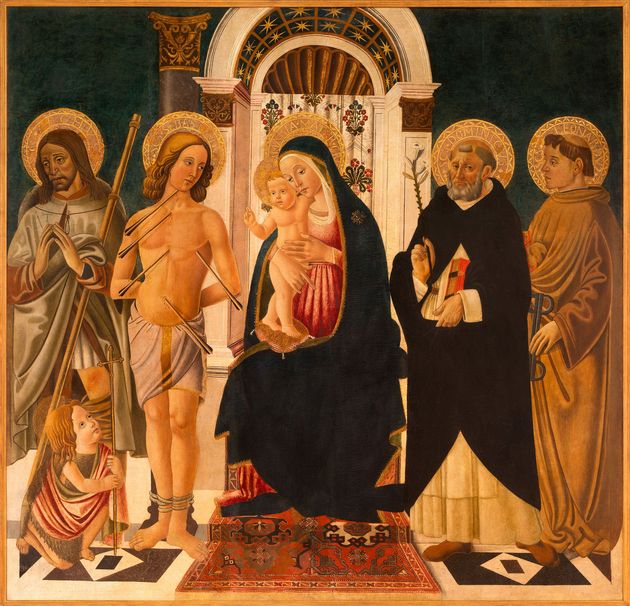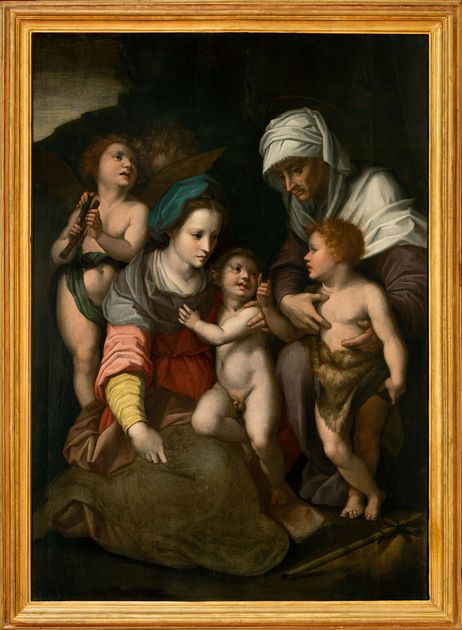The presence of Donatello, called to Prato with Michelozzo to work on the outside pulpit of the cathedral in 1428, led to other important commissions for sculptors such as Antonio Rossellino, Mino da Fiesole, Benedetto da Maiano and Andrea della Robbia. The latter in particular had an incredibly active period in Prato in the 1490s, culminating in the decoration of the outer door of the oratory of Sant’Antonio Abate: a work for a church which was only apparently “minor”, given that the commission came from the powerful Ginori famiy, as demonstrated by the coat-of-arms present in the pietra serena frame.
The simplicity of the composition, wholly concentrated on St. Anthony and the two angels at the sides, bears evidence of the master’s hand in many elements: the confident flow of the garments, the serene human authenticity in St. Anthony’s intense face, which seems to lead beyond the viewer’s fourth wall. And the two angels, now independent of any sculptural models, boldly imitate Verrocchio and Leonardo’s haze effects and Filippino Lippi’s quivering lines (Andrea shared with Filippino the religious ideals preached by Fra Girolamo Savonarola).
The whole scene is compactly brought together not only by the trademark blue background of the Della Robbia glazed terracotta panels, but also by a circular crown of fruit festoons, from which the citrus fruits emerge in all their colourful vigour, enlivening the bright white of the ribbons in a fresh synthesis of plastic elements.
The work also marks a noteworthy point in Prato history and town planning, occurring right in the middle of Andrea’s commissions for the basilica of Santa Maria delle Carceri and the church of San Francesco, i.e. the two churches between which the Oratory of Sant’Antonio in fact still stands.
The lunette is on display in the first-floor room dedicated to Donatello and Renaissance sculpture.
